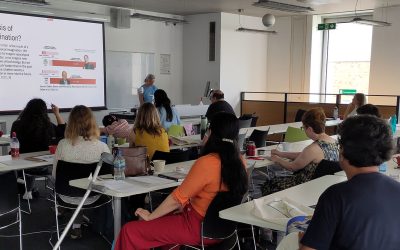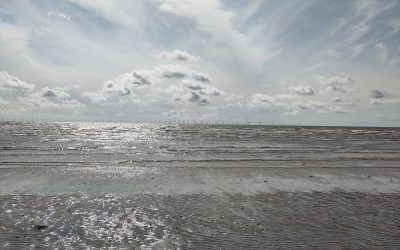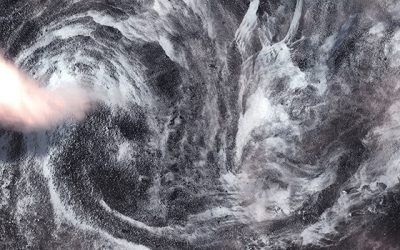Lancaster’s Bronislaw Szerszynski recently attended Knowledge/ Culture/ Ecology 2017 (KCE) in Santiago, Chile, 15-18th November. The conference’s key aims were to explore current transformations in socioecologies and to generate knowledge practises capable of understanding their formation and complex regeneration.
Despite this socioecological focus, Bronislaw nevertheless noted how many presenters and artists engaged with themes of mobilities to discuss these aims, thinking about the need for diverse discourses of how distinct beings live together in a fragile planet, with particular focus on valorising and validating the world’s experiences of indigenous peoples and finding roots to connect the critical social sciences to non-european cultures and societies.
Some work that Bronislaw highlighted as particularly exciting in terms of mobilities:
Flones: The DIY drone from your smartphone
Lot Amorós, and engineers Cristina Navarro and Alexandre Oliver have developed an airframe that has the potential to revolutionise the accessibility and uses of both drone and smartphone technology.
Using relatively inexpensive, easily attainable materials, the opportunity to transform your smartphone into a drone is being made available to the masses. Users are able to easily control their air-borne mobiles via a smartphone app, allowing them to take videos and photos from up to 20metres in the air.
The workshop ‘Eyes and hands in the sky, occupying the space with open flones’, invited KCE attendees and community members living in two vulnerable neighbourhoods in Melipilla city not only to experiment with flones, but also to build their own. This collaboration was designed to help define local problems and consider the potential of solving these using open technology.
DIY instructions for your own flone here.
Earth System Cable (UK 2017)- Adam Fish (Lancaster University)
Lancaster’s Adam Fish, cultural anthropologist, video producer, and senior lecturer in the Sociology Department at Lancaster University, also presented work at the conference. ‘Few users of social media and mobile devices recognise how their everyday swipes, likes, and retweets mobilises a global megastructure that spans the earth, impacts ecologies, and plunges under the sea. This experimental 20-minute video submerges the audience in the socio-ecological tangles of the materiality of the internet. It shows what can been seen and mediates the unseen. The video focuses not on the consumerism surrounding digital culture but rather on the symbiotic relationship be- tween information infrastructure and the geographic, geologic, oceanographic, and atmospheric elements. This video immerses the audience in the textures, sounds, vertical vision, of the digital ecology of the North Atlantic. Featuring drone footage from Iceland, Faroe Islands, Shetland Islands, and London this video traces several undersea cables and in the process reveals how the internet is a material political object intertwined with the natural environment, human labour, and the mobility of data.’ –KCE programme
‘The Semi-Fields of Automotive Innovation’ – Noortje Marres (University of Warwick)
Marres not only aided the Flone workshop and co-host a plenary talk, but also conducted a presentation investigating how the introduction of new types of computionally-enhanced cars is accompanied by the formation of semi-fields (Kelly, 2012) in everyday environments.
‘These are networked spaces, configured across mundane settings like public roads and city squares, which are organised to facilitate controlled forms of measurement and feed-back, but “natural” enough to enable spontaneous interaction. I will discuss empirical cases of semi-field formation, focusing on street trials of so-called connected and autonomous vehicles, with the aim of clarifying implications for sociality and public participation.’ -KCE programme.

‘Drift Economy: sorting out our planetary mobilities’ – Bronislaw Szerszynski (Lancaster University)
Bronislaw participated in the strand: ‘Suspensions: Atmospherics of the Anthropocene’, presenting ‘The Drift Economy: sorting out our planetary mobilities’- building from his earlier experiment at Cemore’s Mobile Utopia Conference- ‘The Drift Economy’.
‘Countless entities such as aeolian dust, river sediment, clastic rock, bacteria, seeds and spores ‘piggyback’ on the major flows of the Earth sys- tem, and thus are picked up, carried along and deposited by wind, rivers, hillslopes and other fundamental ow systems. How can we learn from these powerful forces of ‘planetary mobility’, that are capable of moving objects huge distances, measuring and sorting them using internal fluid forces, and organising them into complex structures? Could we imagine a radically different, abiomimetic mobility system, based not on locomotion but on drift? What might be the advantages of this in terms of environ- mental sustainability? How might it open up the human imagination to a greater appreciation of the multiple ways of being, becoming and moving enjoyed by the different entities with which we share this planet? How would society and culture have to be different if all journeys were powered by ambient environmental energy, and the exact destination could not be guaranteed in advance?’- KCE programme

View the full programme or visit the KCE site for more information on the conference.
Featured Title Image:Jakob Montrasio



